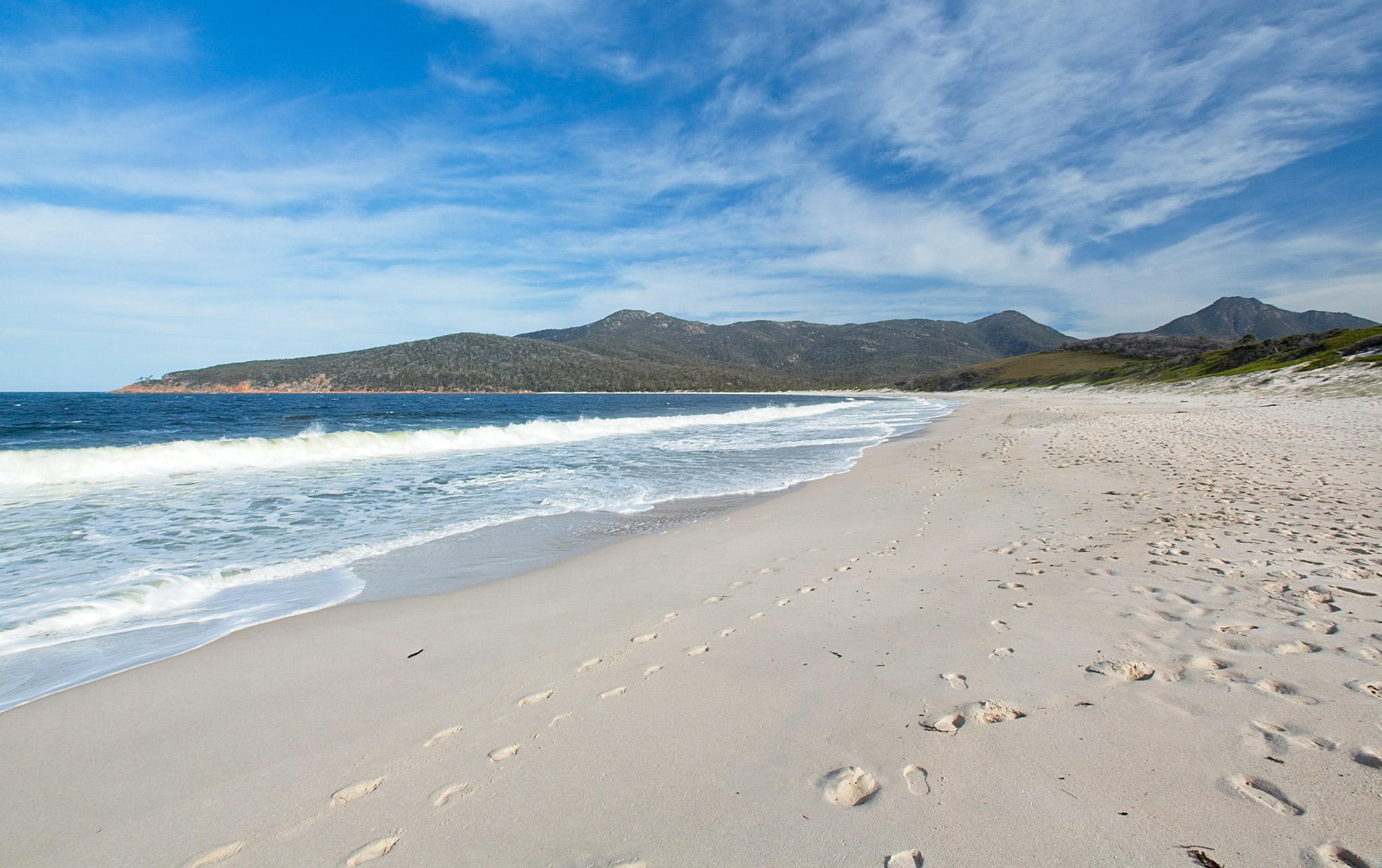The long trek to Australia warrants a memorable detour to enjoy the wild beauty of Tasmania, an Australian island state located 1,000 kilometers south of Sydney. This rugged island includes both World Heritage sites and national parks that protect an impressive 42 percent of its land. The island of Tasmania is a diverse and picturesque sanctuary and an up-and-coming holiday retreat.
Our journey started and finished in Sydney, where we had rented a house at Curl Curl Beach with my husband’s family over Christmas. Getting our toes in the sand on Sydney’s northern beaches was a welcome reprieve from the Inland Northwest’s wintry chill. We spent the week hiking Sydney’s coastal walks, swimming in the choppy surf and ambling up and down the coastline between Manly, Curl Curl, and Dee Why beaches.

In the city, we lunched at the Sydney Opera house (a once-in-a-lifetime indulgence), took in the botanical gardens, enjoyed a political satire at the Sydney Theatre Company, peeked in the posh shops in The Rocks, and ferried back and forth from Circular Quay to the Northern Beaches.
Christmas at the beach was sublime! The day after Christmas, a.k.a. Boxing Day, after a sunny respite with family, we departed from the Sydney airport for Hobart, Tasmania. Our departure was in sync with the famed Sydney to Hobart Yacht Race, an annual sporting spectacle known as one of the most grueling and prestigious yacht races in the world. The 100 or so sleek yachts were positioning themselves in Sydney Harbor to start the competition as we flew their itinerary from Sydney south to Tasmania, or Tassie, as it is often called.
We spent a few nights in Hobart, the capital of the state of Tasmania, on the River Derwent. While the weather was rainy in Hobart, that didn’t stop us from reveling in this compact, yet cosmopolitan city. Under the shelter of our umbrellas, we did a walking tour of Battery Point, a chic suburb with curious sandstone and weatherboard cottages.

Yielding to the rain, we sipped a flat white (a popular Australian drink similar to a latte) in a charming, artisan bakery with brick and timber accents. It was tempting to ride the ferry across the river to the hip M.O.N.A., or Museum of Old and New Art. The M.O.N.A is an architectural masterpiece built into the hillside featuring the private art collection of gambling magnate David Walsh, and an on-site winery and brewery. Alas, we gave it a miss this trip as we were penny-pinching to make up for some recent splurges.
We planned our trip so we would be in Hobart on a Saturday to take in the Salamanca Market. The market, a vibrant explosion of color, is home to 300 vendor stalls along the historic Salamanca Place near the waterfront. Even in Europe’s open-air markets, I have never seen such a vivid display of artisans selling their wares. From dazzling flower bouquets to local crafts and the freshest local produce, this lively market was colorful and bountiful.
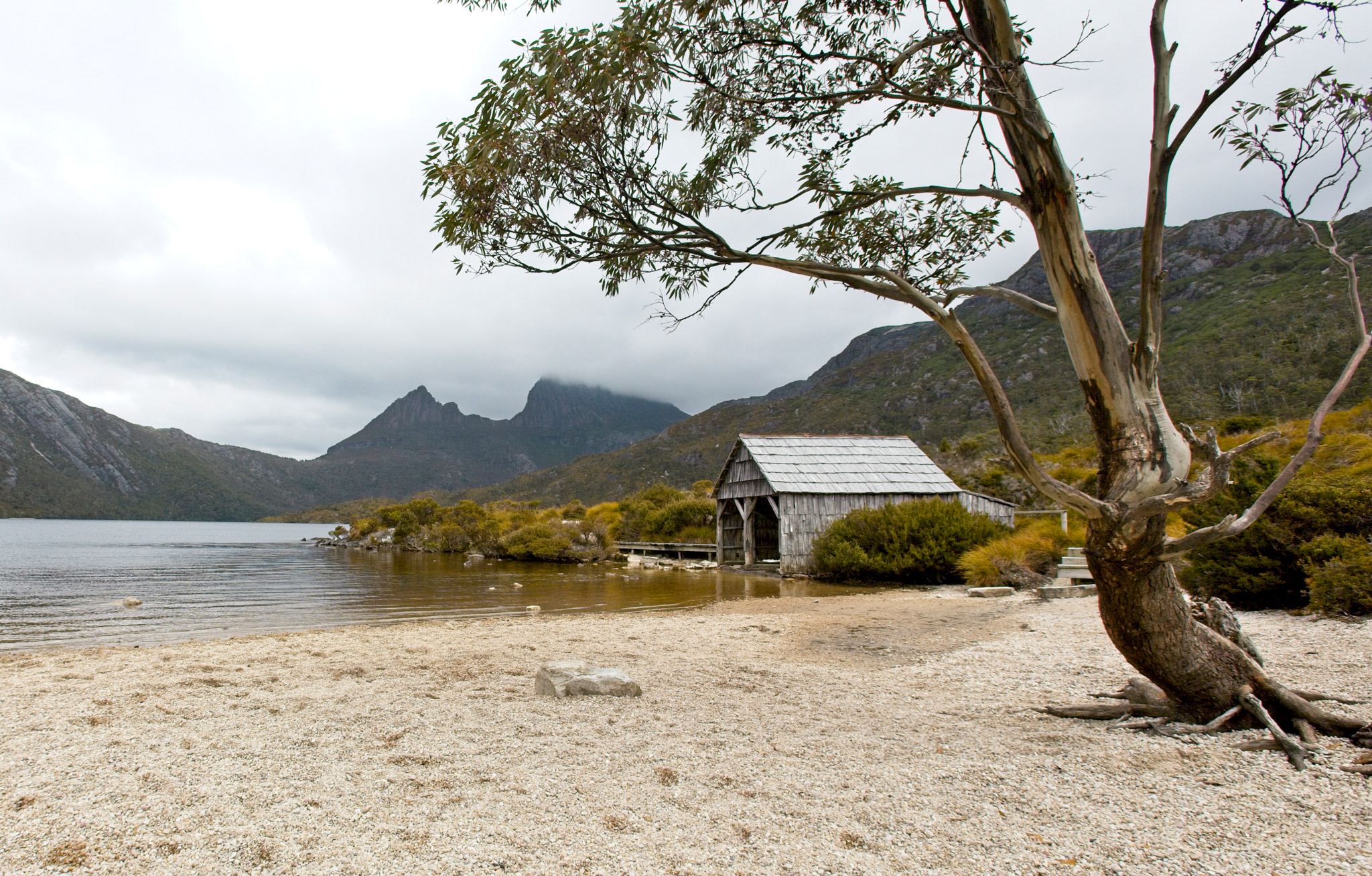
We wove through the crowds of shoppers amidst restaurants’ chefs who were carefully selecting their ingredients for the evening’s specials.
Hobart is home to a sweeping farm-to-table movement and a haute cuisine destination for culinary enthusiasts.
Story continues after a quick message from our sponsor below.
Content after our urban fix in Hobart, we drove to Port Arthur, on the island’s southeasternmost peninsula to take in some of Tassie’s dark history. In the early 1800s, Tasmania was known as Van Diemen’s Land, which Britain considered to be near the end of the earth. For this reason, the Brits deemed Tasmania a worthy place to banish the most nefarious prisoners from their burgeoning penitentiaries. Between 1788 and 1868, Britain and Ireland shipped approximately 162,000 prisoners to Australia, and some of the worst offenders landed in Van Diemen’s Land, where an old timber station was converted to a penal colony called Port Arthur in the 1830s. At Port Arthur, thousands of prisoners suffered mental abuse in the solitary confinement cells, were hung in the gallows and were subject to hard labor in the nearby coal mines. It was especially chilling and eerie to walk through the compound’s underground confinements.
Our next stop was to see The Blow Hole, Tasman Arch and Devil’s Kitchen in the Tasman National Park. These striking rock formations offer stunning views of the coastline and are home to a blowhole that sends frothy sea water shooting into the air to the rhythm of the waves. It was a lovely afternoon, perfect for picnicking and exploring the many treasures within the national park.
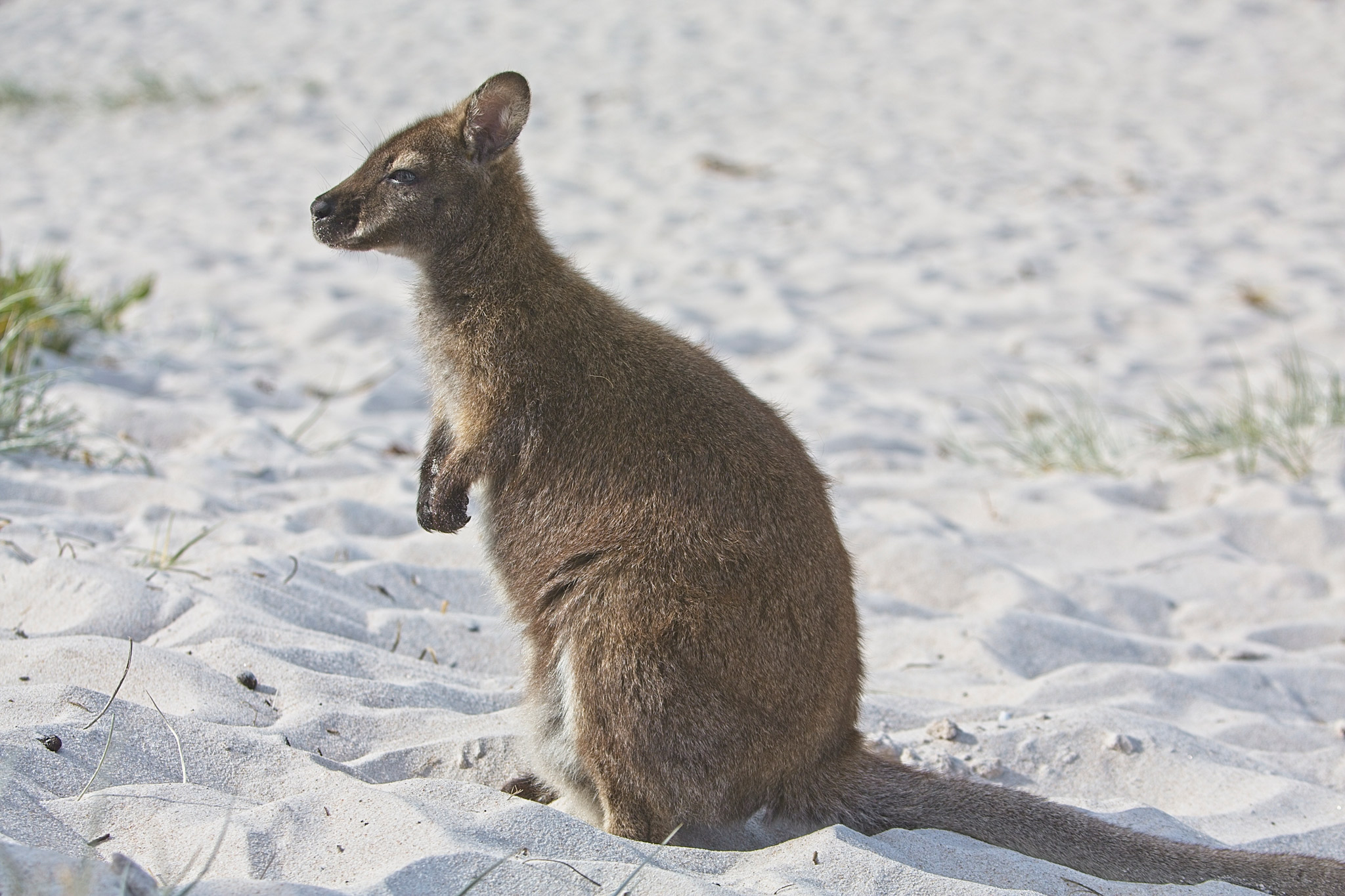
No visit to Tassie would be complete without a trip to the stunningly beautiful, and relatively unspoiled, Wineglass Bay. Located on the central east coast of Tasmania and protected by the Freycinet Peninsula, this bay has been hailed as one of the world’s best beaches for luxury travel. In the 1820s, the bay was a favorite spot for whalers, who would harpoon the whales, drag them back to shore and butcher them to boil down the blubber to derive the whale oil. The practice left so much blood in the bay that the perfectly curved bay resembled a wine glass filled with red wine. Thankfully, the beauty of this pristine bay offered no traces of the past whaling decimation from which the bay’s name originated.
As we began our hike into Wineglass Bay, we were greeted by a wallaby that hopped right up to us as if to say hello. The hike took us up through a eucalyptus forest to a saddle with a viewpoint gifting forever views of the bay with Hazards Beach to the east and flanked by Mount Graham and Mount Freycinet. We continued down the trail to the beach, an expansive stretch of sugary white sand with the Hazard Mountains, from which we came, as a backdrop. Again, we were welcomed by a friendly Wallaby that posed for photos and stood by us as we drank in the intoxicating view. We spent the afternoon frolicking in the sand and carrying on a silent conversation with our wallaby friend.
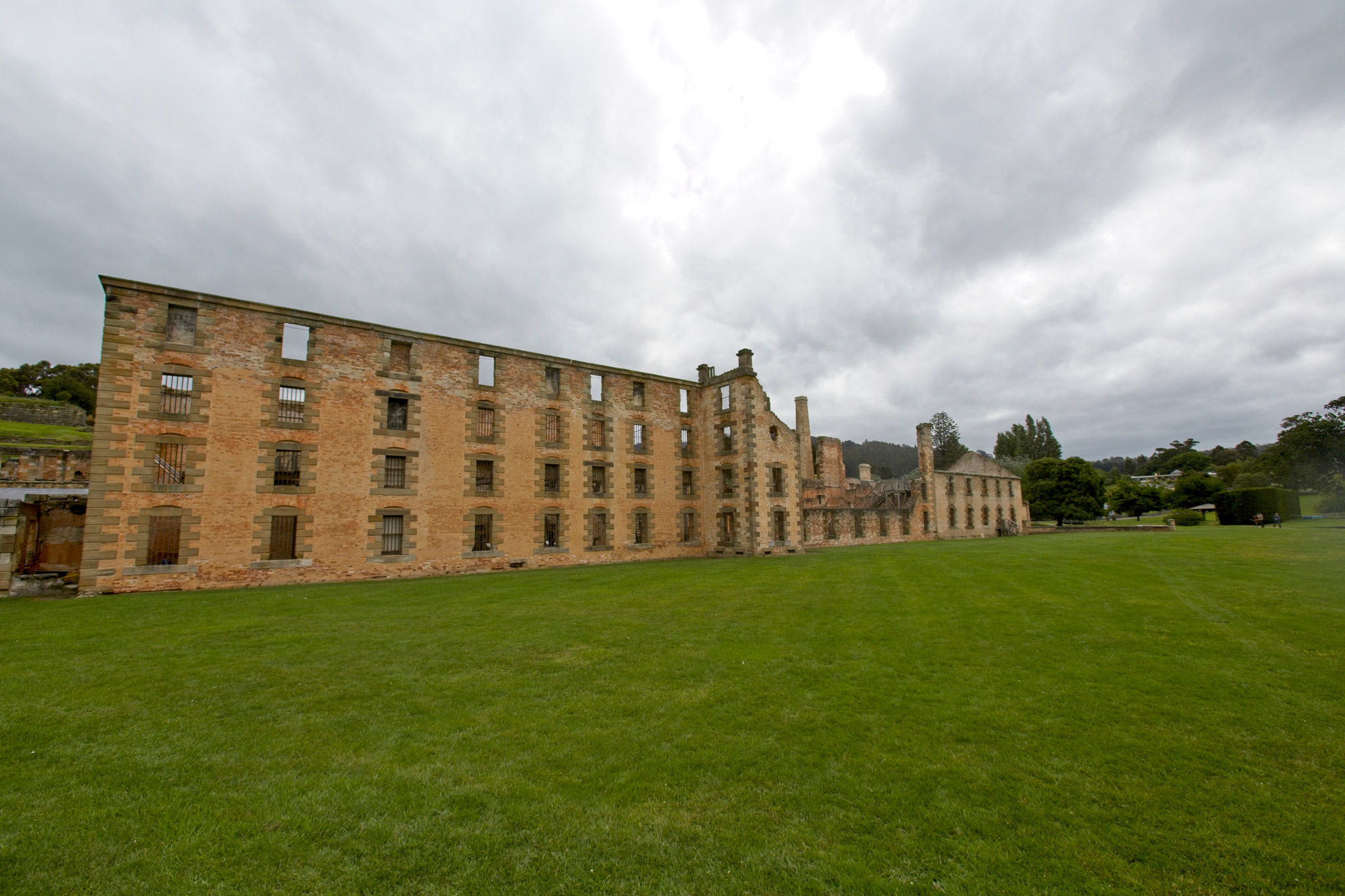
Our next stop was Cradle Mountain-Lake St. Clair National Park in the central highlands of Tasmania. Given that this was a holiday within a holiday, it was not feasible to come equipped with our camping gear. The lodging options were limited due to the popularity of this park, so we opted for an economy cabin at the Cradle Mountain Lodge.
The lodge itself offers luxury in the wilderness, but our rustic cabin was more than adequate for us. The grounds at the lodge offered a variety of walking tracks, many with wooden boardwalks above the soggy earth. In the evening, we wandered the walking tracks and spotted the multi-colored echidna, a spiny anteater that is a peculiar walking contradiction. Another treat was to see so many wombats around the lodge grounds that were seemingly unbothered by humans. I am smitten with these muscular little marsupials that are low to the ground and built like tanks. We were delighted to see so much wildlife in the park, although we did not spot the elusive Tasmanian Devil, and think the best chance for sighting one is in a zoo or paid roadside attraction.
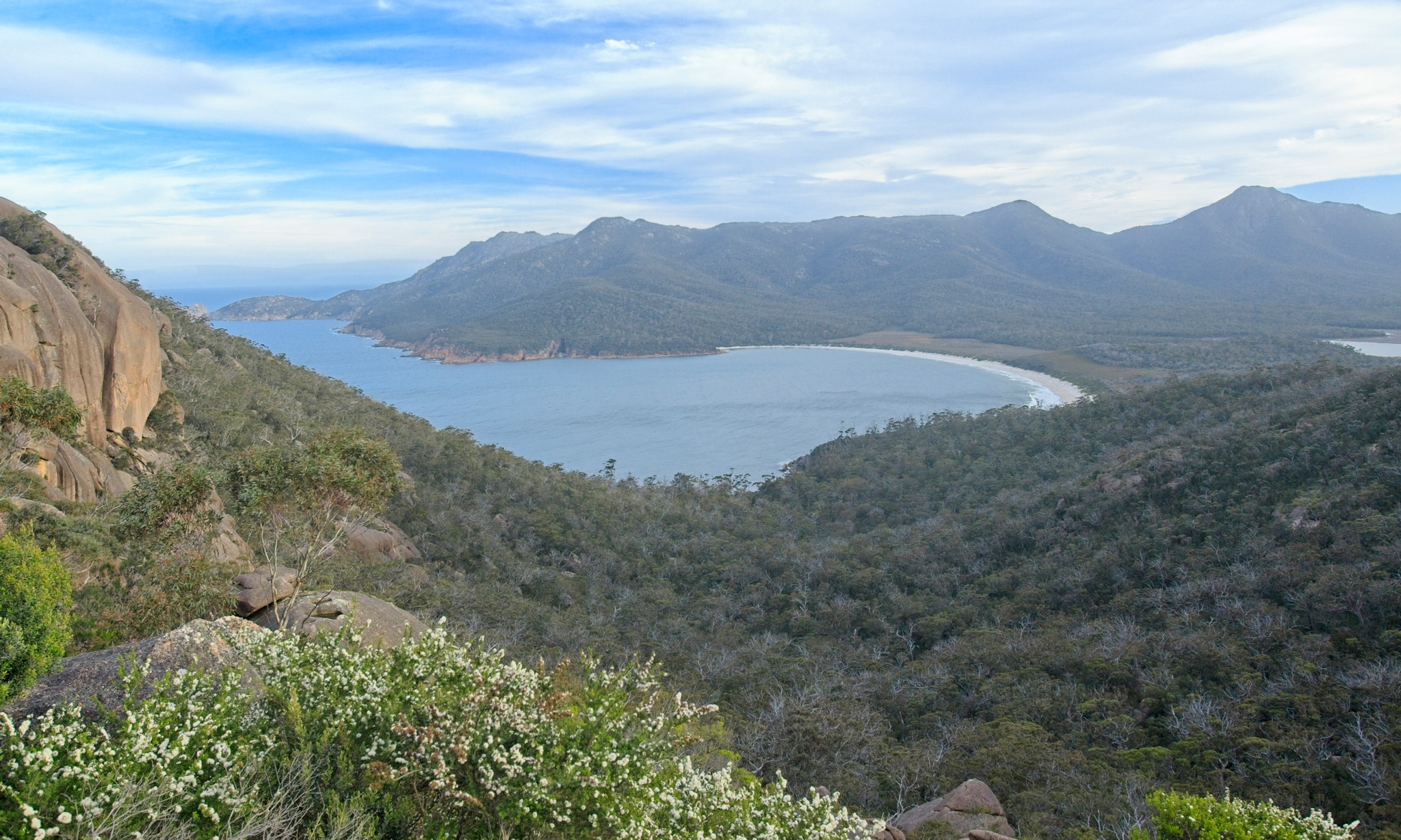
We hiked a well-known portion of the Overland Track that circled around Crater Lake and terminated at Dove Lake. Waiting our turn amongst the other hikers, we snapped the obligatory photo from the iconic boat shed at Dove Lake with Cradle Mountain looming in the background. The taste of Cradle Mountain-Lake Sinclair National Park left us dreaming of returning to complete the entire Overland Track. To spend six days hiking through this rugged natural area would be a dream adventure!
Our final day in Tassie was spent driving the leisurely road to Launceston. The drive was slow and windy with pastoral views and a plethora of grazing sheep. Launceston, one of the oldest cities in Australia, is a well-preserved indication of Australia’s early European influence with its manicured parks and graceful Victorian and Colonial architecture.
From Launceston’s airport, we reluctantly boarded our plane and said hooroo (goodbye) to Tassie until we are lucky enough to come back for a continued adventure.
Cheers! N
By Denise Lundy
Photography By David Ronalds
As Featured In: Summer/Fall 2020



